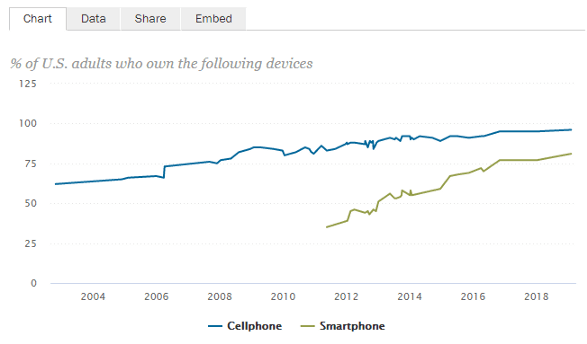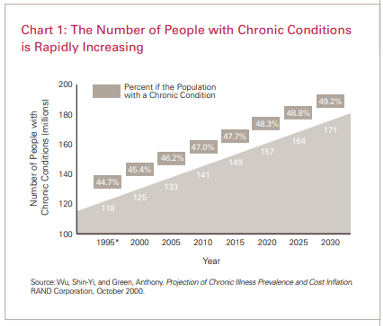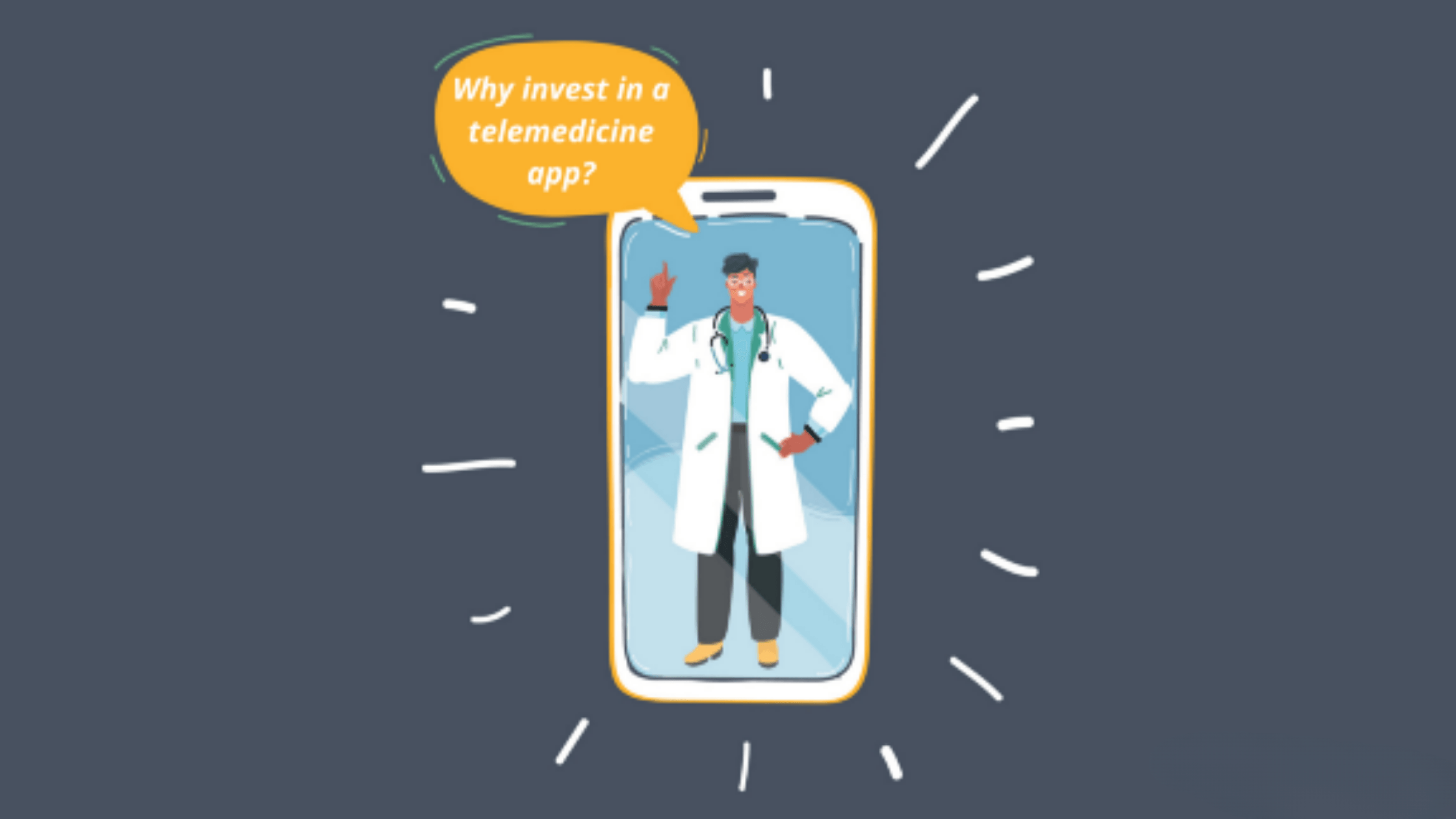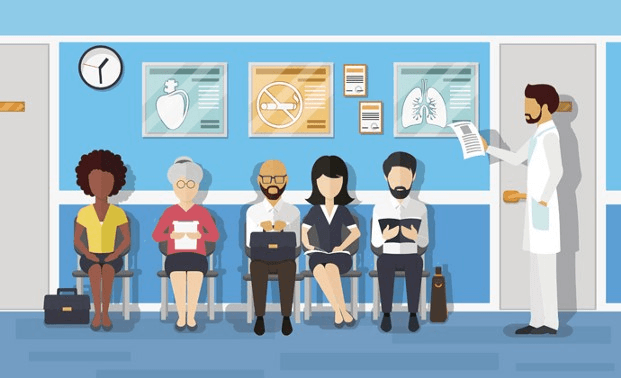The coronavirus pandemic has brought into prominence a technological development that has seen a lot of interest over the past few years but has never really taken off — telemedicine.Telemedicine is a relatively new form of e-healthcare where patients and doctors are connected via video calls, chat, text, or phone calls.
Telemedicine has evolved alongside technology in the past few years. The pandemic has only heightened the importance of a good telemedicine system to back up the regular healthcare industry.
The US government, for instance, waived many billing and geographical limitations for telemedicine in March.
History of Telemedicine
Telemedicine has been around for quite some time, although not in the format that we know it. As early as 1940, there have been documented cases of medical record transfer over telephone lines in Pennsylvania. In the ’60s, NASA used microwave technology to transmit X-ray photographs and other medical information to the Public Health Service hospital.
As we moved into the 21st century, telemedicine evolved into more sophisticated methods, with smartphones replacing desktop computers and the increase in internet penetration, making telemedicine adoption easier in rural areas.
The value of the global telemedicine market was estimated at a whopping 17.8 billion dollars in 2014, and this number is expected to grow at a rate of 18.4 percent through 2020.
So why should you consider investing in telemedicine? We will now give you 11 reasons as to why investing in telemedicine is worthwhile your time and money. Read on to learn more.
Reason 1: Supports Social distancing
In this age of the coronavirus pandemic, social distancing is seen as a key step in stopping the spread of the virus in its tracks.
A poll by Gallup found that 72 percent of adults in the US say they will now avoid public places like restaurants and stores.

64 percent of all the respondents said they would “mostly” isolate themselves, and the percentage is only poised to go higher as the virus spreads through the country.
At the time of publishing this article, the US has recorded close to 86,000 deaths and another 1.5 million infected by the coronavirus. The only way this curve can be flattened is by practicing social distancing.
Telemedicine is the perfect solution to help tide over this crisis, especially in a developed country like the US, where close to 81% of the population owns a smartphone.

With government intervention encouraging the use of telemedicine, social distancing is probably the biggest benefit of investing in this field.
The Centers for Medicare and Medicaid Services (CMS), for instance, allowed remote healthcare to be billed the same way as an in-person visit, for more than 80 new services.
It is obvious that governments across the world want to help telemedicine grow, and that makes it the right time to invest in this field.
Reason 2: Helps deliver care to patients in rural areas
With video consultations and on-demand doctor’s appointments, telemedicine can help bridge the gap between the number of doctors and patients, especially in countries like the US.
According to this data by the WHO, there are close to 26 doctors per 10,000 patients in the US, whereas the number of doctors falls to approximately 8 per 10,000 in a developing nation like India.
The US census data tells us that one in five Americans lives in rural areas, which translates to roughly 60 million people. Coming to India, this number sees a surge, with approximately 68% of the country living in rural areas. That is a huge chunk of the population that can be served using telemedicine.
While mobile penetration is strong in the US, with approximately 77% of the country using smartphones, the technology is in place, and all that is needed is a rise in awareness among the people.
Telemedicine apps have been going strong post the COVID 19 crisis, and physicians have been upping their game to help provide timely medical assistance to people all across the US.
For example, Dr. Bob Murry, chief medical information officer at NextGen Healthcare, has switched all his appointments to virtual-only.

Doctors like Bob will soon have to conduct a majority of their consultations over the internet, which means inclusive -healthcare for people living in rural areas.
Having a wide geographical reach, is thus, a definite plus in case of telemedicine, and a strong reason for considering an investment in this field.
Reason 3: Reduces initial investment
A visit to the doctor is a costly affair and something that a vast majority of patients want to avoid. The average cost of treating non-life-threatening cases such as sore throat, flu, and bronchitis is $1800 more in the emergency room than in primary care settings, according to this report.

Setting up a clinic will also leave a big hole in the investor’s wallet, be it the physician or the bank that is helping them open the clinic. According to the website doctorly.org, launching a primary care practice costs anywhere from $70,000 to $100,000, which includes money for rent, payroll, insurance, and living expenses for the first few months.
Compare this to the low initial cost of setting up a telemedicine practice. This would require you to buy some basic medical devices, which would cost you somewhere in the range of $5000 to $10,000, along with a video conferencing platform ( $1500), a telemedicine cart which includes telemedicine software, primary care devices and mobile case ($20,000) and basic training for your staff ($200). That’s an entire setup for under $40,000!!
If you want to learn about the cost of setting up a telemedicine facility in detail, you can check out this blog.
Setting up a telemedicine facility is far cheaper than setting up a physical practice. With more and more people turning online for their medical needs, it is a prime reason for you to invest in this space.
Reason 4: Reduces patient’s waiting time
Waiting times can be frustrating to the patients, and it reflects in their doctor’s satisfaction scores. We define waiting time here as both the amount of time it takes a patient to book an appointment with the doctor and also the amount of time the patient waits physically once they visit the doctor.
In 2017, Merritt Hawkins created a survey in which they found that in 15 large U.S Metros, a person had to wait 24.1 days before he could book an appointment with a doctor. On average, “new patients” spend 2.7 weeks after calling for their first appointment.
The patient’s predicament doesn’t end once they reach the doctor too. The average waiting time for a patient in the United States was 18 minutes and 13 seconds, according to this 2018 Vitals study.
All this can be avoided with the help of a telemedicine app. Patients can see the availability of the doctors, pick a time that suits them, and carry on with their appointment from the comfort of their homes. The only bottleneck here is the internet speed at both the patient’s and the doctor’s site, and with services such as 5G in the pipeline, this can be easily overcome.
Reducing the patient’s waiting time is a definite plus point for considering an investment in the telemedicine space.
Reason 5: Helps patients dealing with chronic ailments
Chronic diseases are generally incurable diseases that require prolonged medical attention, such as asthma, type 2 diabetes, cancer, and heart disease. According to various studies, approximately 133 million Americans suffer from some form of chronic illness or another. That is roughly 40% of the population, and the numbers are on the upswing.

Chronic diseases account for 81% of US hospital admissions, and 91% of all prescriptions filled. That’s a large percentage that telemedicine can have a positive impact on.
Telemedicine can greatly help the patients who have a chronic ailment and who live in rural areas, and who have to travel a lot to see their primary health care provider. Many patients may also be uncomfortable sitting for prolonged amounts of time, and these patients will benefit a lot if they can talk to their doctor and get a diagnosis done from the comfort of their homes.
A patient suffering from a chronic ailment may need to make lifestyle changes, such as quitting smoking or adopting a new exercise regimen. With telemedicine, doctors can keep a closer eye on their patients.
There are different types of specialized equipment that the doctors can use to monitor their patient’s health remotely , for instance, a Bluetooth scale. More on these types of equipment later.
If the patient of a chronic ailment sees a new symptom, telemedicine allows him to get instant feedback from their physician, instead of traveling long distances. This will also help the doctors gauge if the patient needs readmission or if their condition can be cured with a tweak in the medication. This helps in reducing hospital costs for the patient.
Reason 6: Helps you differentiate from your competition
In a highly competitive healthcare environment, telemedicine can help your clinic stand out among the competitors.
According to this report by Business Insider Intelligence, in 2018 alone, there were an estimated seven million telehealth users worldwide, and three -quarters of large US companies provided telemedicine as part of their health plan.
75% of the people polled admitted that they were willing to attend a doctor’s appointment remotely.
The stats show that there is more than enough willingness among employers and patients alike to take advantage of telemedicine facilities, and the onus is on the healthcare providers to now set up the necessary infrastructure.
As the coronavirus pandemic washes over the world, more and more people will think twice before stepping into a hospital, and telemedicine will be the method of choice for most patients to interact with a doctor.
For family practices or local physicians, telemedicine allows the opportunity to compete with retail health clinics or larger practices. Patients are now on the lookout for non-traditional ways to healthcare, and telehealth can help these small clinics to position themselves as an alternative to big hospitals.
Reason 7: Helps save time for doctors & patients
A study spanning two decades, conducted by the University of California Davis, found that adoption of telemedicine saved a patient nearly four hours of driving time and $156 in travel costs.
One of the most telling advantages of telemedicine is that it saves patients and doctors enormous amounts of time. Time spent by the patient to travel to a doctor, time spent in waiting rooms, time spent to collect test results, all are eliminated when you use telemedicine. Investing in a telemedicine app based on the development of travel software can help provide medical care to patients on the go and reduce the time spent waiting in doctors' offices
For doctors, telemedicine means they can attend to patients sitting far away during their lunch breaks/ after regular practice hours.
The adoption of telemedicine also has an ancillary benefit in the form of time savings for the administrative staff in these clinics. When a person decides to partake in an online consultation, the office staff don’t have to worry about check-ins and rooming for these patients. This time can be used to give better service to the patients who actually visit the clinic, improving the overall satisfaction score.
Reason 8: Reduces treatment costs
The UC Davis study, which we mentioned earlier, also found that over a time period spanning two decades, from 1996 to 2013, showed that telemedicine collectively saved patients approximately $3 million in costs.
According to another study by Nemours Children’s Health System, telemedicine saved a patient an average of $50. Telehealth appointments, on an average, cost $24 less than a normal visit for every patient.
Alfred Atanda Jr, MD, who led the Nemours study, says, “Telemedicine may be utilized by providers to keep cost and resource utilization low.”
Doctors can adopt the use of telemedicine to retain patients in their practice. A Truven Health Analytics study showed that 71% of emergency room visits were unnecessary. Every healthcare visit the patient seeks outside their family physician is dollars lost to the person.
Setting up a home telemedicine practice also means that the physicians can leave their practice early, which means they don’t have to pay for utilities or other expenses incurred by keeping the clinic open. If the supporting staff is paid by the hour, the physicians can save money on their payroll by spending less time in the office.
Reason 9: Provides access to medical aid during pandemic / natural disasters
The coronavirus pandemic has accelerated the adoption of telemedicine and has thrown into light the vast loopholes in the medical system.
This article from The Economist shows how Chinese telemedicine services like WeDoctor, JDHealth, and Ali Health rose up to the challenge and opened online coronavirus clinics to treat patients across the nation.
For patients, telemedicine gives them the opportunity in distance monitoring and remote diagnosis of mild diseases like a fever in case they are under quarantine.
And telemedicine providers have jumped at this opportunity to provide quality healthcare to patients and bring them onboard.
UCSF, for instance, has screened over 50,000 patients using its automated platform and has helped in identifying and preventing the spread of the virus.
In North Carolina, UNC Health Alliance is using its COVID-19 Quarantine Checks to provide daily check-ins to more than 1000 people.
And it’s not just the coronavirus pandemic. Telemedicine can be vital in providing vital healthcare to patients in case of natural disasters like a tornado.
Nemours, a telehealth service provider, was among the many vendors who provided free telemedicine services in the time of Hurricane Irma and Harvey.
American telehealth companies like MDLive, American Well, Doctor on Demand and TeleDoc, all offered free healthcare facilities in the time of Hurricane Harvey.
While natural disasters cost the state millions of dollars in damage and irreplaceable loss of human lives, they must also be seen as an opportunity to advance telemedicine technology further.
Reason 10: Eases access to expert opinions
In the US, there are 5.2 neurologists for every 100,000 patients, according to this study by the US National Library of Medicine. This number varies from 12”1 in more developed parts like Massachusetts to a measly 2.6 in Nevada and Wyoming.
An NCBI study shows that there are 48 cardiologists per 100,000 patients in the United States. The pattern is similar for other specialists such as oncologists, dermatologists, critical care specialists, etc.
Telemedicine aims to address this gap by connecting specialists with their patients via call, chat, or video. Patients, especially those living in rural areas, need not travel hundreds of kilometers to see a specialist.
There are several portals, including Specialists on Call and Chiron health, who focus on providing customers with specialist care. American Well has taken a step ahead and launched
“The Exchange,” which is an online marketplace that connects every stakeholder in the medical industry.
American Well CEO Roy Schoenberg said that the company wants to do what Amazon did for book stores initially, and create a reliable national virtual healthcare system.
Expert opinions matter and the ability of telemedicine to provide this service at low cost means this is a great time to invest in this field.
Reason 11: Brings advancements in telemedicine makes diagnosis easier
Telemedicine relies heavily upon technology to make it a differentiator to the normal healthcare system, and the rapid advancements in technology have only helped telemedicine gain more prominence.
Take diagnostic equipment manufacturer ekuore, for example. The company provides solutions such as electronic stethoscopes and other allied products.
Electronic stethoscopes with interchangeable chest pieces mean doctors can remotely monitor the health of their patients with an app on their smartphone. This comes in handy if your patient is hundreds of kilometers away and has to drive all that distance just for a regular check-up.
The app also allows a doctor to record and edit auscultation, share it with other doctors to gain a second opinion, and display a phonocardiogram on their smartphones.
It is technologies like this that give telemedicine that edge over conventional healthcare systems and makes it one of the most lucrative investments you can make.
Already convinced about building a telemedicine app? Make sure you follow these best practices for telemedicine app development to create a secure, scalable, and user-friendly experience.
Watch this space for more on telemedicine, including costs, the best telemedicine apps in the market at the moment, and how you can build your own telemedicine app.









